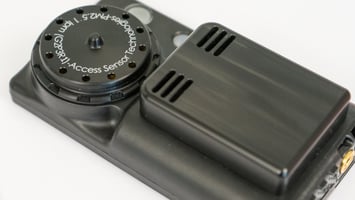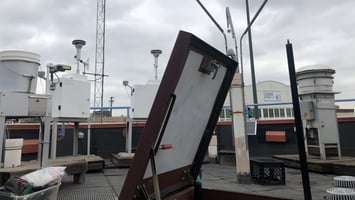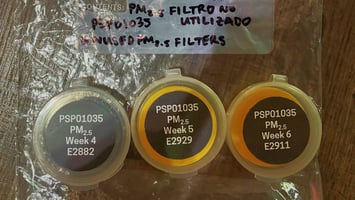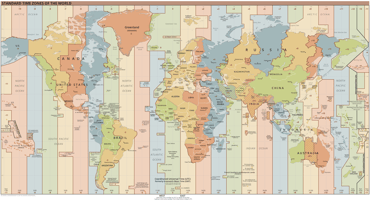
UPAS v2.1 PLUS




The Ultrasonic Personal Air Sampler (UPAS) is a wearable device that samples particulate matter (PM) air pollution onto filters while logging time-resolved data on device location and the local fine particle mass concentration.
Filter samples collected with the UPAS can be analyzed to determine:
- The average PM mass concentration that was present in the sampled air.
- The composition of the PM (for example, the amount that is made up of black carbon—a marker of traffic-related air pollution—or various metals).
Time-resolved fine PM, GPS, temperature, humidity, light intensity, and motion data logged by the UPAS v2.1 PLUS can be analyzed to identify:
- Locations where pollution levels were elevated.
- Likely sources of exposure.
Pairing of the filter sample and time-resolved sensor provides greater confidence in sensor-derived pollution estimates.
Minimal burden: The UPAS is small, light, and silent enough to be worn in a person’s breathing zone with minimal disruption to work and life.
Sampling made simple: It’s easy to set up a sample using our mobile app.
Reliable operation: Active controls maintain the target volumetric flow rate even as environmental conditions change and the pressure drop across the filter increases. The UPAS logs the flow rate and other operational data to facilitate robust sample quality assurance.
Durable construction: The UPAS has been field tested over thousands of hours in large sampling campaigns and challenging environments around the world.
Specifications
| Exterior size | 128 mm × 70 mm × 36 mm |
| Weight | 250 g (without inlet or filter cartridge) |
| Noise | <45 dB |
| Flow rate range | 1.0 to 2.0 L min-1 ± 4% (actively controlled) |
| Size-selective inlets (per relevant EPA, ACGIH, and ISO criteria) | PM2.5, 1 L min-1 PM2.5, 2 L min-1 Respirable, 2 L min-1 PM10 / Thoracic, 2 L min-1 |
| Filter size | 37 mm (default) or 25 mm; quick-change filter cartridges for easy in-field handling |
| Battery type | Li-ion, 24 W-h |
| Battery endurance | 15 to 48 h, depending on filter media and sample settings; extendable via external battery or line power. |
| On-board sensors monitor: | • Fine PM mass concentration (Sensirion SPS30) • CO2 concentration (Sensirion SCD41) • Qualitative tVOC and NOx levels (Sensirion SGP41) • Light (Lux, IR, UV, UV index) • Motion/acceleration (linear & angular, 6 DOF) • Air temperature/pressure/relative humidity • GPS location of UPAS (can be deactivated) • Sample flow rate • Differential pressure across the sample filter |
The UPAS has been laboratory- and field-tested alongside conventional personal sampling equipment including the Personal Environmental Monitor (PEM), the Harvard Impactor, the Mesa Labs/BGI Triplex Cyclone, and the Personal Modular Impactor (PMI). Validation data can be found in the following peer-reviewed publications:
Volckens, J., C. Quinn, D. Leith, J. Mehaffy, C. S. Henry, and D. Miller-Lionberg. 2017. Development and evaluation of an ultrasonic personal aerosol sampler. Indoor Air 27:409–16. doi: 10.1111/ina.12318. See Figure 5.
Arku, R. E., A. Birch, M. Shupler, S. Yusuf, P. Hystad, and M. Brauer. 2018. Characterizing exposure to household air pollution within the Prospective Urban Rural Epidemiology (PURE) study. Environment International 114:307–17. doi: 10.1016/j.envint.2018.02.033. See Figure 5.
Pillarisetti, A., E. Carter, S. Rajkumar, B. N. Young, M. L. Benka-Coker, J. L. Peel, M. Johnson, and M. L. Clark. 2019. Measuring personal exposure to fine particulate matter (PM2.5) among rural Honduran women: A field evaluation of the Ultrasonic Personal Aerosol Sampler (UPAS). Environment International 123:50–3. doi: 10.1016/j.envint.2018.11.014. See Figures 2 and 3.
Burrowes, V. J., R. Piedrahita, A. Pillarisetti, L. J. Underhill, M. Fandiño‐Del‐Rio, M. Johnson, J. L. Kephart, S. M. Hartinger, K. Steenland, L. Naeher, K. Kearns, J. L. Peel, M. L. Clark, W. Checkley, HAPIN Investigators. 2020. Comparison of next‐generation portable pollution monitors to measure exposure to PM2.5 from household air pollution in Puno, Peru. Indoor Air 30:445-58. doi: 10.1111/ina.12638. See Figures 2 and 3.
Li, X., J. Tryner, B. N. Young, L. Hernandez-Ramirez, M. Phillips, S. WeMott, G. Erlandson, G. Kuiper, D. Dean, N. Martinez, L. Sanpedro, S. Magzamen, J. Volckens. 2024. Application and validation of a wearable monitor for assessing time- and location-resolved exposures to particulate matter in California’s Central Valley. Aerosol Science and Technology. doi: 10.1080/02786826.2024.2415481. See Figure 1 and Table 1.
Technical Resources
Product Information Sheet
A two-page summary of UPAS v2.1 PLUS capabilities and specifications

User Guide (new firmware)
UPAS v2.1 and v2.1 PLUS User Guide for firmware revision 200 and later.
Download PDF from Dropbox (coming soon!)
User Guide (old firmware)
UPAS v2.1 and v2.1 PLUS User Guide for firmware revision 157 and earlier.
Zotero Library
A public library of scientific publications that feature the UPAS
AST UPAS iOS app
Mobile application for programming UPAS v2.1 and UPAS v2.1 PLUS sample settings
AST UPAS Android app
Mobile application for programming UPAS v2.1 and UPAS v2.1 PLUS sample settings
Firmware
Latest firmware for UPAS v2.1 and v2.1 PLUS
R Shiny application
Web-based application for data visualization
astr package
R package for working with UPAS log files
General:
UPAS v2.1 - Product information sheet
UPAS v2.1 and v2.1 PLUS - User Guide
Zotero library of publications that feature the UPAS
AST Wiki
Firmware and app:
UPAS v2.1- iOS mobile device app
UPAS v2.1- Android mobile device app
UPAS v2.1 and v2.1 PLUS - Firmware
Tools for data analysis:
R Shiny application for data visualization
GitHub: astr R package for working with UPAS log files
Recent related blog posts
Pricing

UPAS v2.1 PLUS
$3,745.00UPAS v2.1 PLUS only; inlets, cartridges, and other accessories sold separately. Request a quote to receive information about academic and nonprofit discounts.














